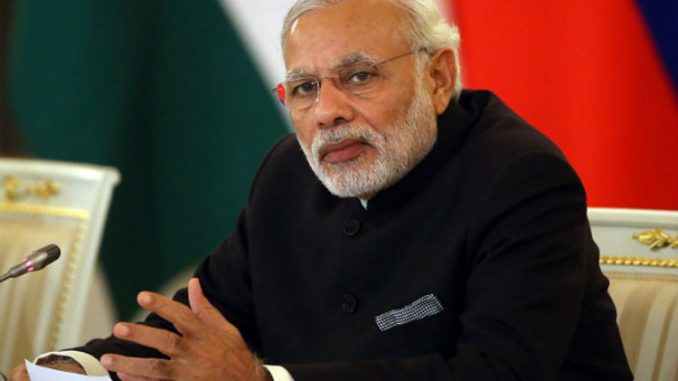
Modi government completed 3 years on May 25, 2017. Time flies. It seems like it was only yesterday when Modi led BJP won a historic mandate in 2014 central elections. The Indian economy has been growing at 7%+ levels during Modi’s tenure. We have surpassed China as the fastest growing country in the world. IMF calls India ‘as the only ray of hope’ in an otherwise uncertain / gloomy economic environment.
Within 7 months of Modi taking oath, crude oil prices fell by half from USD 105/bbl levels to USD 55/bbl levels. It reached a low point of USD 30/bbl in Jan. 2016 and is currently hovering at USD 49/bbl levels. Crude occupies a significant position in our economy. 87% of our crude requirements were imported in FY2016.
Decline in crude prices have led to a significant reduction in import bill from Rs. 8.6 lakh crores in FY14 to Rs. 4.7 lakh crores in FY17, resulting in savings of approx. Rs. 8-10 lakh crores. This amount has been utilized for infrastructure spending, increase in NREGA allotment and other welfare schemes.
Source: PPAC
Since crude bill is paid in Dollars this has led to a saving of foreign exchange of USD 150 odd billion in last three years. Majority of the increase in forex reserves from May 2014 to current date is on account of the above.
Decline in crude prices has had a significant impact on inflation. Fuel prices impact transportation costs and resultantly prices of essential items of food and other things. Retail inflation which was 8.59% in April 2014 has reduced to sub 3% levels in April 2017. This has resulted in increase in disposable income of Indians by 3.3% of GDP as per an IMF report, which in turn has provided a boost to private consumption.
Low inflation has given leeway to central bank to reduce interest rates. Repo rate which was 8% in May 2014 has now reduced to 6.25%. This has led to reduction in home loan, car loan, corporate’s loan rates. Home loan rate for example of SBI has declined from 10.25% p.a. as of Mar. 2014 to 8.35% p.a. now. All this has resulted in credit growth of 12.6% in FY15 & 10.7% in FY16. In FY17 credit growth has taken a hit and grown by 5% only primarily due to demonetization.
Low crude prices have allowed govt. to increase special excise duty on petrol and diesel by keeping the prices of fuels same as when Modi took oath. While crude oil price inclusive of adverse exchange rate movement has declined by 49%, petrol prices have reduced by 8.5% only.
The excise duty on petrol which was Rs. 9.5/litre when Modi govt. came to power, has more than doubled to Rs. 21.5/litre currently. This is akin to cheating customers, prices should have been decreased in line with decline in global crude oil prices. Anyways, this has resulted in windfall gains of Rs. 2.5-3 lakh crores to GoI.
Low crude prices have also helped govt. to deregulate diesel prices and cap subsidy on LPG. All this has led to significant decline in petroleum subsidy bill from Rs. 65,000 crores in FY14 to Rs. 27,000 crores in FY17. Lower subsidies have dramatically improved the financial health of state owned oil marketing companies (OMCs). The combined net profit of 3 OMCs on a standalone basis was c.Rs. 12,000 crores. This has jumped to c.Rs. 25,500 crores for 9M FY17. Higher profits have ensured higher dividends to GoI.
On an aggregate Rs. 11-13 lakh crores have been savings / additional receipts to the Modi govt. on account of low crude oil prices. This accounts for c.3% of aggregate GDP of FY15-17.
The higher excise duty receipts have helped GoI maintain its fiscal deficit targets. If excise duty was not increased taking advantage of low crude oil price scenario, then fiscal deficit as % of GDP would have been 4.25-4.5% vs 3.9% in FY16 and 3.5% budgeted for FY17.
To sum up, low crude prices have been a boon for the Indian economy. It has positively impacted different aspects of Indian economy and acted as lever for growth. It has helped India maintain its investment grade credit rating. Lady luck is definitely smiling on Mr. Modi. This doesn’t take away, though, the steps taken by Modi govt. to improve ease of doing business and increase investor confidence in the Indian economy.
GoI may have missed a trick here. Reducing fuel prices in line with decline in crude oil rates would have left significant amount of money in the pocket of Indians as seen above (Rs. 2.5-Rs. 3 lakh crore) accounting for 1.5% of private final consumption expenditure. This would have had a spiraling effect on consumption and investment leading to higher growth.
The article was first published in TheQuint.
Click HERE to read more.
Vote for Shikha Dhingra For Mrs South Asia Canada 2017 by liking her Facebook page.
You can publish this article on your website as long as you provide a link back to this page.


Be the first to comment